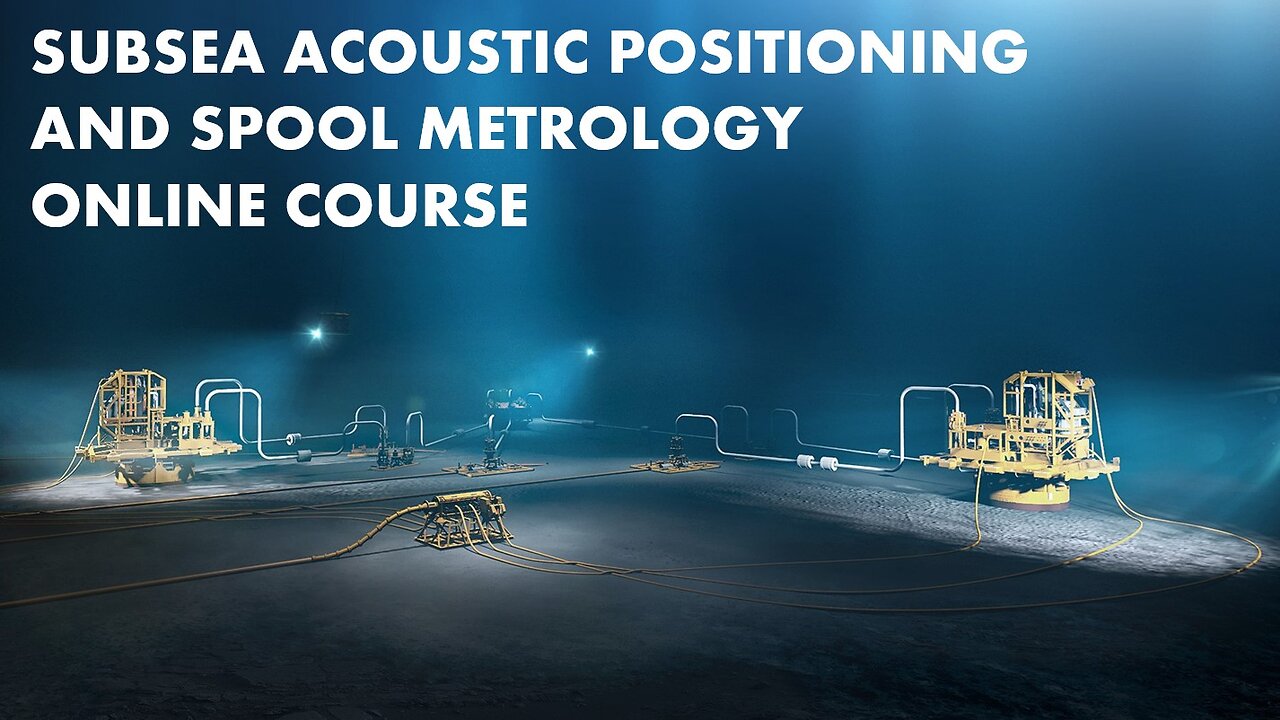Premium Only Content

Subsea Acoustic Positioning and Spool Metrology Online Course
Subsea metrology is the process of acquiring accurate measurements for the connection of subsea structures and pipelines. IMCA’s guidance covers the most commonly used techniques today. These are long baseline (LBL) acoustics, both diver taut wire and digital taut wire, photogrammetry and inertial navigation systems (INS). This course cover basic principles, along with engineering requirements, different methods and technologies, and some of the advantages and limitations for each technique.
The objective of subsea metrology is to determine accurately the relative horizontal and vertical distance between subsea assets, as well as their relative heading and attitude.
Absolute positioning is not necessary as the objective is to know the three-dimensional range and bearing between relative hubs or flanges. A primary issue is defining the measurement point on the hub or flange. Ideally, it should be as close as possible to the centre, but this is not always possible. The hub might have a pressure cap, the instrument package might be too big to fit on to the hub or access to the hub might be restricted.
An offset sensor mounting is then created, called the observation point. There are many different solutions for mounting sensors, depending on the instrument – how much it weighs, what measurement procedure is required, etc. For many subsea applications the most widely used solution is a female receptacle on the structure and the instrument mounted on a male stab.
For full videos you can visit this link :
https://drive.google.com/file/d/1CVLUl2IpxGSJ7dRpSJwmjy3WpVz8o27E/view?usp=sharing
and you will be directed to a google drive link where you can download all files of this course
https://drive.google.com/file/d/1F4V0vD_qyqcTH5lQUskLv805Wr8Swwbf/view?usp=drive_link
-
 LIVE
LIVE
SpartakusLIVE
5 hours ago$20,000 Hide and Seek Tourney w/ Stonemountain64 || #1 Rat wins the BIG CHEESE
355 watching -
 1:06:27
1:06:27
BonginoReport
3 hours agoBig Bad JB Threatens Trump! - Nightly Scroll w/ Hayley Caronia (Ep.120) - 08/26/2025
81.3K36 -
 1:02:26
1:02:26
Kim Iversen
3 hours agoIran Rejects Nuclear ‘Spy’ Inspectors — War Next?
28.6K73 -
 DVR
DVR
StoneMountain64
7 hours agoWARZONE LEGEND RETURNS. GHILLIE SUIT $20k TOURNEY.
50.7K3 -
 1:06:33
1:06:33
TheCrucible
3 hours agoThe Extravaganza! EP: 27 with Guest Host: Rob Noerr (8/26/25)
21.1K3 -
 DVR
DVR
GloryJean
10 hours agoHide & Seek Tournament w/ Spartakus, StoneMountain64 & Stevie
11.3K -
 LIVE
LIVE
Reidboyy
6 hours ago $0.20 earnedNEW FREE FPS OUT ON CONSOLE NOW! (Delta Force = BF6 with Killstreaks)
22 watching -
 1:37:26
1:37:26
Redacted News
4 hours agoHIGH ALERT! DID UKRAINE JUST DECLARE WAR ON HUNGARY? ZELENSKY DEMANDS MORE CASH FROM NATO | REDACTED
157K106 -
 LIVE
LIVE
Akademiks
7 hours agoDrake got finessed w/ Fake Chain? Drake vs hip hop media. Cardi B in court. Did Young thug SNITCH?
884 watching -
 9:00
9:00
Zach Humphries
1 day ago $0.46 earnedXRP and CARDAO working together now?
13.4K1